B-17G Bomber
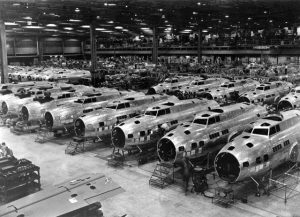
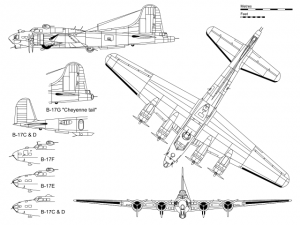 In World War II, my dad, Allen Spencer was the Flight Engineer and top turret gunner on a B-17. The B-17 was an amazing plane. Strategic bombing missions actually began at the tail end of World War I, And the big world powers knew that they needed to develop bomber fleets that could handle this new kind of bombing mission, because if they did not, they would be vulnerable to the evil nations who did develop such bombers. During the month of August 1934, in anticipation of rising tensions in the Pacific, the US Army Air Corps proposed a new multi-engine bomber that would replace the outdated Martin B-10. They put out the challenge and Boeing decided to get into the competition. The plan for this bomber was to provide reinforcement to bases in Hawaii, Alaska, and Panama.
In World War II, my dad, Allen Spencer was the Flight Engineer and top turret gunner on a B-17. The B-17 was an amazing plane. Strategic bombing missions actually began at the tail end of World War I, And the big world powers knew that they needed to develop bomber fleets that could handle this new kind of bombing mission, because if they did not, they would be vulnerable to the evil nations who did develop such bombers. During the month of August 1934, in anticipation of rising tensions in the Pacific, the US Army Air Corps proposed a new multi-engine bomber that would replace the outdated Martin B-10. They put out the challenge and Boeing decided to get into the competition. The plan for this bomber was to provide reinforcement to bases in Hawaii, Alaska, and Panama.
Enter the B-17 Flying Fortress. Boeing competed against both Martin and Douglas for the contract to build 200 units of such a bomber, but failed to deliver, as the first B-17 Flying Fortress crashed. Nevertheless, the Air Corps loved the design so much that they ordered 13 units for further evaluation and analysis. After a string of tests, it was introduced in 1938. The B-17 was now the prime bomber for all kinds of bombing raids. The prototype B-17 Bomber was built at the company’s own expense and was a fusion of the features of Boeing XB-15 and Boeing 247 Transport Aircraft. Initially, it could carry a payload of 4850 pounds along with 5x .30-inch machine guns. The 4x Hornet Radial Engines could produce 750 HP at 2100 meters. It was a tremendous machine. A reporter from the Seattle Times would nickname it The Flying Fortress…a name that stuck, even if he didn’t know how very accurate he was.
As World War II heated up, the attack on Pearl Harbor drew the United States into it, and the B-17 Flying 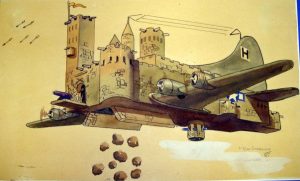
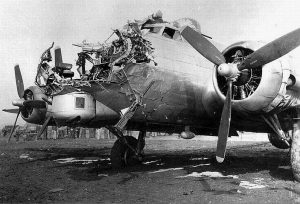 Fortress became a staple, used in every single World War II combat zone and by the time production ended in 1945. Boeing along with Douglas and Vega had built 12,731 bombers. When the US 8th Airforce arrived in England in 1942, their sole mission was to destroy Germany’s ability to wage war. They would use any means necessary, from carpet bombing to precision bombing. On August 17th, 1942, eighteen B-17s launched a bombing raid over Nazi-held territory in Europe, hitting railway networks and strategic points. The Luftwaffe was unprepared and didn’t know how to best attack the new planes, but it didn’t take long to improve their tactics. The B-17s suffered losses too. On September 6th, 1943, 400 bombers were sent out to attack a ball-bearing plant, 45 didn’t return. October 4th, 60 out of 291 B-17s sent to the same location were lost. January 11th, 1944, 600 B-17s were sent to various industries. Bad weather kept all but 238 of them on base. Still, 60 were lost. These losses were quite costly when you consider that a single B-17 Flying Fortress would cost $238,329 in 1945. The Luftwaffe quickly perfected their attacks on the B-17 Flying Fortress. Head on proved more fruitful and therefore the Americans developed the term “Bandits at 12 O’clock High” for oncoming Luftwaffe fighters.
Fortress became a staple, used in every single World War II combat zone and by the time production ended in 1945. Boeing along with Douglas and Vega had built 12,731 bombers. When the US 8th Airforce arrived in England in 1942, their sole mission was to destroy Germany’s ability to wage war. They would use any means necessary, from carpet bombing to precision bombing. On August 17th, 1942, eighteen B-17s launched a bombing raid over Nazi-held territory in Europe, hitting railway networks and strategic points. The Luftwaffe was unprepared and didn’t know how to best attack the new planes, but it didn’t take long to improve their tactics. The B-17s suffered losses too. On September 6th, 1943, 400 bombers were sent out to attack a ball-bearing plant, 45 didn’t return. October 4th, 60 out of 291 B-17s sent to the same location were lost. January 11th, 1944, 600 B-17s were sent to various industries. Bad weather kept all but 238 of them on base. Still, 60 were lost. These losses were quite costly when you consider that a single B-17 Flying Fortress would cost $238,329 in 1945. The Luftwaffe quickly perfected their attacks on the B-17 Flying Fortress. Head on proved more fruitful and therefore the Americans developed the term “Bandits at 12 O’clock High” for oncoming Luftwaffe fighters.
Various models of the B-17 Flying Fortress were produced, but the B-17G was the one that was most liked. Almost 9000 B-17Gs were produced, the most of any of the models, because of their superior specs. A B-17G weighed 65,000 pounds and could cruise at a speed of 150 miles per hour, peaking at 287 miles per hour. It could attain a service ceiling of 35,600 feet, and carry a 9600 pounds payload. The four Wright R-1820 Cyclone engines could produce 1200 horse power each! It was one rugged machine. One particular B-17 Bomber 
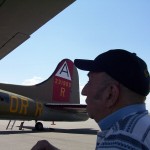 survived a bombing mission over Cologne, Germany, and flew back to safety with 180 flak holes and only 2 out of 4 engines in operation. The veteran never forgot, and 75 years later wrote a thank you letter to Boeing. He was thankful to be alive. My dad always felt that way too. Any amount of damage that happens to a plane can mean the difference between crashing and making it home. The B-17 was truly a flying fortress, and on of the best planes to be in. The chances of coming home were better than most.
survived a bombing mission over Cologne, Germany, and flew back to safety with 180 flak holes and only 2 out of 4 engines in operation. The veteran never forgot, and 75 years later wrote a thank you letter to Boeing. He was thankful to be alive. My dad always felt that way too. Any amount of damage that happens to a plane can mean the difference between crashing and making it home. The B-17 was truly a flying fortress, and on of the best planes to be in. The chances of coming home were better than most.

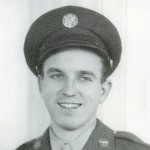 In the height of World War II, on January 14, 1943, President Franklin D Roosevelt made history when he became the first president to travel by airplane on official business. The trip was not without danger. The German U-boats were wreaking havoc on Allied war ships in the Atlantic, and it was decided that a face to face conference was needed to discuss strategy. The man President Roosevelt was going to see, was my fifteenth cousin once removed, Winston Spencer-Churchill. No American President had flown on official business before, but with security in the Atlantic uncertain, Roosevelt’s advisors reluctantly agreed that he should fly. I’m sure his frail health at 60 years of age played a part in their decision too. The secret trip began on January 11, and the plane had to make several stops along the way. They took off from Florida with a first stop in the Caribbean to refuel and allow the president to rest. They then took off and headed south along the South American coast to Brazil, then across the Atlantic to Gambia, finally reaching Casablanca on this day, January 14, 1943.
In the height of World War II, on January 14, 1943, President Franklin D Roosevelt made history when he became the first president to travel by airplane on official business. The trip was not without danger. The German U-boats were wreaking havoc on Allied war ships in the Atlantic, and it was decided that a face to face conference was needed to discuss strategy. The man President Roosevelt was going to see, was my fifteenth cousin once removed, Winston Spencer-Churchill. No American President had flown on official business before, but with security in the Atlantic uncertain, Roosevelt’s advisors reluctantly agreed that he should fly. I’m sure his frail health at 60 years of age played a part in their decision too. The secret trip began on January 11, and the plane had to make several stops along the way. They took off from Florida with a first stop in the Caribbean to refuel and allow the president to rest. They then took off and headed south along the South American coast to Brazil, then across the Atlantic to Gambia, finally reaching Casablanca on this day, January 14, 1943.
It seems strange to us now that they would take such a roundabout route, but things were different then. The Boeing 314 Flying Boat that had been dubbed the Dixie Clipper was a big heavy plane. It had a flight range of 3,500 miles, and the direct route would have been about 4326 miles, making at lease one stop necessary. Since the Secret Service considered air travel for a president as risky anyway, I’m sure they wanted to take a 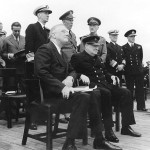 route that would keep them as far away from any fighting as they could. Also, the final leg of the trip required that the group transfer to an Army transport plane. The C-54 was required to fly at 15,000 feet to cross the Atlas Mountains…an altitude that seems insignificant today, but must have been quite high then. The Secret Service personnel and FDR’s advisors were worried about the oxygen levels affecting the president, and in the end, he did have to go on oxygen for a time during that part of the flight.
route that would keep them as far away from any fighting as they could. Also, the final leg of the trip required that the group transfer to an Army transport plane. The C-54 was required to fly at 15,000 feet to cross the Atlas Mountains…an altitude that seems insignificant today, but must have been quite high then. The Secret Service personnel and FDR’s advisors were worried about the oxygen levels affecting the president, and in the end, he did have to go on oxygen for a time during that part of the flight.
The flight was mastered successfully, and the two men were safely tucked into the Anfa Hotel where Roosevelt and Churchill were both in suites that were close together, making it the perfect place for the conference to take place…after the rooms were cleared of listening devises that had been planted by unknown persons, that is. The advisors and chiefs of staff did most of the hard work of the negotiations, but the presence of Roosevelt and Churchill kept them on task and working toward an agreement. The conference was very important to both sides, as the British were being hit very hard, and Roosevelt needed to keep the American troops advancing and winning their battles, so he could demonstrate to the American people that the tide of this war was turning. People get weary of war quite quickly, and in order to keep their support, victory in battle is key.
The Casablanca Conference was looked at by some as a victory for the British negotiators, because Churchill’s strategy prevailed, but they had missed the fact that the Americans also gained British commitments to long-term goals that went beyond the immediate objectives in the Mediterranean. The Americans agreed to attack Sicily after the victory in North Africa and the British agreed to allow a massive buildup of Allied Forces in  Britain, which would allow for an invasion of France with a target date of May 1, 1944. The invasion actually took place on June 6, 1944, and would become a day we all know as D-Day, when the troops stormed the beaches of Normandy…and that is where my dad came in. Since he was one of the Allied Forces that was stationed in England, his B-17G Bomber was one of those that provided cover for that invasion. It seems quite strange to me that a conference that took place over a year before, and 2 months prior to my dad’s enlistment, would ultimately place him in a position to fight in one of the most well known battles of World War II.
Britain, which would allow for an invasion of France with a target date of May 1, 1944. The invasion actually took place on June 6, 1944, and would become a day we all know as D-Day, when the troops stormed the beaches of Normandy…and that is where my dad came in. Since he was one of the Allied Forces that was stationed in England, his B-17G Bomber was one of those that provided cover for that invasion. It seems quite strange to me that a conference that took place over a year before, and 2 months prior to my dad’s enlistment, would ultimately place him in a position to fight in one of the most well known battles of World War II.
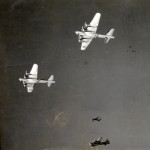
 Yesterday, I read a tribute written by the grandchild of an airman who served in a B-17 Bomber during World War II, and I found myself both curious and a little annoyed by the first few lines of the story. Oh, I know that the writer was as proud of his grandfather, as I am of my dad, but when the story started out saying that in order to go home, those men had to fly twice as many missions as the 25 my dad’s group had to fly, I got really curious. My search for information would lead me to probably the same “bone chilling” feeling as the other author’s information had. The author’s grandfather, like my dad, was the flight engineer, except that he had been stationed in Northern Africa, where my dad had been in England, at Great Ashfield. While I don’t dispute his grandfather’s bone chilling missions, I’m nevertheless, not sure he understood what the fighting was like in England, and especially at Great Ashfield.
Yesterday, I read a tribute written by the grandchild of an airman who served in a B-17 Bomber during World War II, and I found myself both curious and a little annoyed by the first few lines of the story. Oh, I know that the writer was as proud of his grandfather, as I am of my dad, but when the story started out saying that in order to go home, those men had to fly twice as many missions as the 25 my dad’s group had to fly, I got really curious. My search for information would lead me to probably the same “bone chilling” feeling as the other author’s information had. The author’s grandfather, like my dad, was the flight engineer, except that he had been stationed in Northern Africa, where my dad had been in England, at Great Ashfield. While I don’t dispute his grandfather’s bone chilling missions, I’m nevertheless, not sure he understood what the fighting was like in England, and especially at Great Ashfield.
It is true that the crews at Great Ashfield only flew 25 missions before going home. The reasons are maybe even more bone chilling than the mission report the other author was reading. The article I found puts it like this. “The average life of a B-17 bomber at Great Ashfield was just over 4 months. Very few B-17 bombers that were transferred to the base lasted a complete tour of duty. The average Airman lasted 15 combat missions and few completed an entire tour of 25 missions. Much less 35 !!!! The average LIFE of a Ball Turret Gunner in combat was 12 MINUTES.” Thankfully my dad was not the ball turret gunner, but rather the top turret gunner…still, Great Ashfield was where my dad had served!!! And he was one of those “few” who lived to go home. His plane was one of those “very few” Bombers that lasted a complete tour of duty. In all the years that I have known about my dad’s war years, I guess that I didn’t really allow myself to think about what could have happened…probably because it was too hard to think about.
Even when Dad told me about the 3 Poplar trees at the end of the runway…the landmark that let them know that for another mission, at least, they were safely home. I can’t imagine what it must have been like to board that B-17 Bomber in the morning, not knowing whether or not you would see the base again…much less your family. Then to see those trees, and to know that you were safe, would be almost overwhelming.

 I am no longer annoyed at the author of the other article, and I agree that his grandfather is just as much a hero as my dad is. Both of these men bravely stepped into those planes every time they were told to, and flew off into battle, not knowing if they would return. Rather than feeling annoyed, I feel a kinship to the other author, because had circumstances ended differently neither of us would have existed. Our lives are what they are, because his grandfather and my dad were among the few who survived battle in a B-17 Bomber, and among the few whose B-17 Bomber and the grace of God, brought them safely home to their families.
I am no longer annoyed at the author of the other article, and I agree that his grandfather is just as much a hero as my dad is. Both of these men bravely stepped into those planes every time they were told to, and flew off into battle, not knowing if they would return. Rather than feeling annoyed, I feel a kinship to the other author, because had circumstances ended differently neither of us would have existed. Our lives are what they are, because his grandfather and my dad were among the few who survived battle in a B-17 Bomber, and among the few whose B-17 Bomber and the grace of God, brought them safely home to their families.
 The B-17’s and B-25’s are back in town again this week, and of course, they always put me in mind of my dad. I can’t see one in the newspaper, or flying over without thinking of him. Dad was a Top Turret Gunner and Flight Engineer on a B-17 G Bomber during World War II. In his letters to his mom, he was so excited to be on this brand new plane that had never been used by any other crew. He was impressed with the ability of this plane, and felt very safe and secure when flying around in it. As a young man in the war, he was excited, and yet cautious, of course, because he was flying into combat zones, after all.
The B-17’s and B-25’s are back in town again this week, and of course, they always put me in mind of my dad. I can’t see one in the newspaper, or flying over without thinking of him. Dad was a Top Turret Gunner and Flight Engineer on a B-17 G Bomber during World War II. In his letters to his mom, he was so excited to be on this brand new plane that had never been used by any other crew. He was impressed with the ability of this plane, and felt very safe and secure when flying around in it. As a young man in the war, he was excited, and yet cautious, of course, because he was flying into combat zones, after all.
I can just imagine how he felt when he was flying in the B-17G Bomber, because he grew up working on things around the farm, and loving the train rides he got to take, and then working on planes at Douglas Aircraft Company, so actually flying around in something he knew so much about, had to be exciting. And then to have it be brand new…well, not many people had that opportunity in those days. My guess is that it was a good thing that they 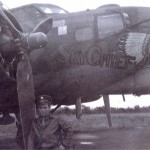 were already in the air, because otherwise he would have been floating around in the clouds without his crew. The feeling behind his letters gave a little view of just how excited he really was.
were already in the air, because otherwise he would have been floating around in the clouds without his crew. The feeling behind his letters gave a little view of just how excited he really was.
When the B-17G Bombers and the B-25’s came into town in August of 2007, Dad and I went out to go through them. Dad wasn’t feeling very well by that time, as he passed away in December of that same year, and somehow in my excitement in taking him out to see his beloved planes, I missed that little fact…at lease until I looked at some of the pictures I took, which showed a tired version of my dad that shocked me some. Nevertheless, we went, and Dad really did have a wonderful time. We took our time, and he told me so much about the time he spent in those planes. You could see just how he felt about them, because it was written on his face, and it was very obvious in his voice. He still loved those planes. They were a part of him, and he was a part of them. You can’t separate such a life changing event from the person who lived it. It changes them, and shapes them into the person they become.

My dad was a deeply caring, loving person, who always put the feelings and needs of others ahead of his own needs. He worried about his mom worrying about him, so he tried to reassure her at every turn. He was a man who loved God and brought his children up in the Lord, and a man who deeply loved his wife, our mother. He was a man who showed his love to those he loved, and taught them to love others and especially one another. He hated anger and fights, and taught us to forgive. Dads just don’t come better. The B-17G Bombers and the B-25’s will head out of town soon, and while I haven’t gone out to see them since my dad went home, the memories will last a lifetime.

 I have been reading through some of my dad’s letters home to his family from World War II, and I find myself thinking about the secrets that had to be kept. During wartime, locations and mission cannot be spoken of, because it might, or more likely would, compromise the mission and the men involved. I’m sure it was hard for the men, when they couldn’t tell their families where they were, other than the country they were in. Still, they knew that what they were doing was bigger than they were, and they were a part of something greater than their own needs…and there were spies everywhere. Letters and calls could be intercepted, and if they were, missions could fail, and lives would be lost.
I have been reading through some of my dad’s letters home to his family from World War II, and I find myself thinking about the secrets that had to be kept. During wartime, locations and mission cannot be spoken of, because it might, or more likely would, compromise the mission and the men involved. I’m sure it was hard for the men, when they couldn’t tell their families where they were, other than the country they were in. Still, they knew that what they were doing was bigger than they were, and they were a part of something greater than their own needs…and there were spies everywhere. Letters and calls could be intercepted, and if they were, missions could fail, and lives would be lost.
Mixed in with the necessity of secrecy, was the need to let family know you were ok. Remember, that most of these men were very young, and many had never been away from home before. Now on that first trip away from home, there are people trying to kill them. My dad had lived away from home before going into the Army Air Forces, but he was very loving and loyal toward his family. It was very important to him that they not worry about him. Dad was also an honorable man. He was a patriot. He would never do anything that would dishonor or put in danger his country, or the men he served with. I can imagine that these men all found themselves in a tough place at that time in the world’s history, but they did what they had to do, because they were a part of something greater than their own feelings, or those of their families.
My dad was the top turret gunner and the flight engineer on a B17 Bomber, stationed at Great Ashfield, Suffolk, England. It was a base in the middle of the English countryside, surrounded by civilian towns and farms. These people knew all too well how important the United States military presence was to their safety, and indeed their very lives. If one of those men had revealed information about their upcoming missions, the entire area could have been attacked and destroyed. So important was their mission over there, and so grateful were the people of that area, that memorials were erected to remember…forever, the sacrifice made by the brave men of the 385th Heavy Bombardment Group, U.S. Army Air Forces. The memorials were placed so that generation, and future generations would remember the sacrifices made to save their lives by men who were a part of something greater than their own lives…to protect the lives of people they didn’t 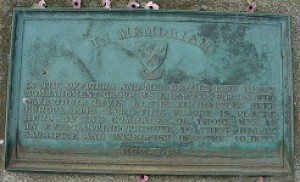 even know. That is what my dad was a part of when he was barely more than a teenager.
even know. That is what my dad was a part of when he was barely more than a teenager.
Those years changed who my dad was, just like they changed the lives of all the men who lived through that turbulent time in the history of the world. Those were hard times for everyone, and yet my dad and the other young men he served with, played their very important part with dignity and honor, placing the lives of innocent civilians ahead of their own lives, because they were a part of something greater.
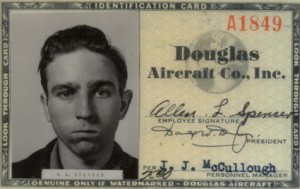 There is something about getting a brand new car that is so exciting. It’s never been used by anyone else. That’s kind of how my dad felt about the B-17G Bomber that he and his crew were assigned. It was brand new. They were to be the first crew to fly her. I’m sure they weren’t the last, since their plane survived the time they were in it. But I don’t really know if the plane continued to fly in war times. The B-17 bombers had a strange history, and I’m sure many people wouldn’t have felt like it was going to be a very safe plane since the early prototypes didn’t fly well. That is probably a fact that I’m sure my grandparents were thankful not to have known, and hopefully my dad didn’t know either. Still, the early models that crashed were built in the mid 1930’s and the B-17G version, which came out in the mid 1940’s, was the final and by far the best version.
There is something about getting a brand new car that is so exciting. It’s never been used by anyone else. That’s kind of how my dad felt about the B-17G Bomber that he and his crew were assigned. It was brand new. They were to be the first crew to fly her. I’m sure they weren’t the last, since their plane survived the time they were in it. But I don’t really know if the plane continued to fly in war times. The B-17 bombers had a strange history, and I’m sure many people wouldn’t have felt like it was going to be a very safe plane since the early prototypes didn’t fly well. That is probably a fact that I’m sure my grandparents were thankful not to have known, and hopefully my dad didn’t know either. Still, the early models that crashed were built in the mid 1930’s and the B-17G version, which came out in the mid 1940’s, was the final and by far the best version.
I am thankful that it was the final version that carried my dad on his missions, and even more thankful that his plane brought him back every time…even though they flew through  many hazardous missions. My dad was so proud of his plane, and he believed that it would bring him safely home again. He could seen why the plane was called The Flying Fortress and The Super Dread, because it could come home even after taking some damage, provided the damage left the fuselage in one piece, of course.
many hazardous missions. My dad was so proud of his plane, and he believed that it would bring him safely home again. He could seen why the plane was called The Flying Fortress and The Super Dread, because it could come home even after taking some damage, provided the damage left the fuselage in one piece, of course.
In my dad’s letters, he described the beautiful plane to his family. Dad could see the beauty in the planes, of course, because he had worked for Douglas Aircraft Company, building planes. So, the intricacies and the strength of the B-17G Bomber made sense to him, where they were probably lost on my grandmother. I took my dad out to the airport the August before he passed away, and he got one last chance to go through the B-17G bomber. He was still highly impressed with the plane, and all it could do. He told me where he was stationed on the plane, and what his duties were, and what a wonderful plane it was. I could still see the look of wonder on his face…almost like that of a little boy with his first toy car or plane. As we went through the plane, I could see why my dad was so impressed with it.

Dad went on to tell his family about how smoothly the plane flew, and how impressed the crew was. He also wanted them all to know that this was a plane that would keep him safe and bring him home. It was very important to him that his family not worry. My dad knew that “not worrying” would be difficult, but he wanted to encourage them and let them know that God would take care of him and bring him back safely. Dad did return from World War II, of course, and he was unscathed. He had experienced things he never expected to experience, and sadly, he really never much enjoyed flying after that time, but he was always in awe of the B-17G Bomber.
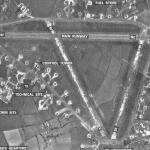
 Lately I have been trying to get an idea of who my dad was when he was in the service…what he went through, what his thoughts might have been, what his life was like. My dad was a top turret gunner and flight engineer on a B-17 Bomber during World War II. He was stationed at Great Ashfield in Suffolk, England, which was located North West of Elmswell. Little is visible of the Army Air Base now, unless you know what to look for. The area has been converted to farmland, but subtle memories remain…a tribute to those brave men who fought and really, saved England from a hostile takeover by the Nazis. It was World War II, and the United States had come in to stand up for what is right…freedom.
Lately I have been trying to get an idea of who my dad was when he was in the service…what he went through, what his thoughts might have been, what his life was like. My dad was a top turret gunner and flight engineer on a B-17 Bomber during World War II. He was stationed at Great Ashfield in Suffolk, England, which was located North West of Elmswell. Little is visible of the Army Air Base now, unless you know what to look for. The area has been converted to farmland, but subtle memories remain…a tribute to those brave men who fought and really, saved England from a hostile takeover by the Nazis. It was World War II, and the United States had come in to stand up for what is right…freedom.
My dad was just 17 when he joined the Army Air Force in 1942. He has always had a deep sense of duty, and standing up for what is right. He fought in the European Theatre, serving as the flight engineer and the top turret gunner on a B-17G Bomber. He participated in 35 bombing missions, was accredited with shooting down 4 German planes and provided air cover over the beaches of Normandy on D-Day. When the war was over, he was honorably discharged and he returned home with the Distinguished Flying Cross, an Air medal with 4 oak leaf clusters, one for each plane he shot down, and 2 gold stars signifying that he had taken part in two major aerial engagements.
That is a story I have heard many times now, but really it is just a summary of what went on. I have often wondered just what a flight engineer is, so I did some research on that position on a B-17G Bomber in World War II. What I found is this. The flight engineer knew the all equipment on the B-17 better than any other crew member, including the pilot, from the engines to the radio equipment to the armament to the engines to the electrical system and to anything else. He may have served as maintenance crew chiefs before moving to the position of a B-17 flight engineer. The flight engineer was also the top turret gunner.
It amazes me that my dad…who was never one to brag…would have such an intricate knowledge of such a magnificent plane as the B-17G…”The Flying Fortress”…but that is exactly what he did. He was the man they turned to if things went wrong…the one they depended on in a crisis to get them down safely, which he did beautifully on at least one occasion. I guess that is why me dad always seemed to know what to do t solve any problem we might have had in life. To him I’m sure they seemed very small by comparison.
Dad was a man of deep thoughts and few words. He considered well what he might say about a situation, before he gave an opinion. He was slow to anger, and always 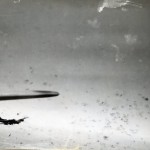 cool
cool 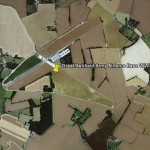 in a crisis. He was a problem solver, who always put his sense of duty before his own desires. He loved his family and his country, and would have died defending any of them, had that been required if him. He was a man to be proud of and the one I am proud to call Daddy. I miss him a lot, but I know I will see him again in Heaven. Today I say, “Thank you Dad, for all you did in your life to make life better for those who were around you, and loved you.”
in a crisis. He was a problem solver, who always put his sense of duty before his own desires. He loved his family and his country, and would have died defending any of them, had that been required if him. He was a man to be proud of and the one I am proud to call Daddy. I miss him a lot, but I know I will see him again in Heaven. Today I say, “Thank you Dad, for all you did in your life to make life better for those who were around you, and loved you.”

